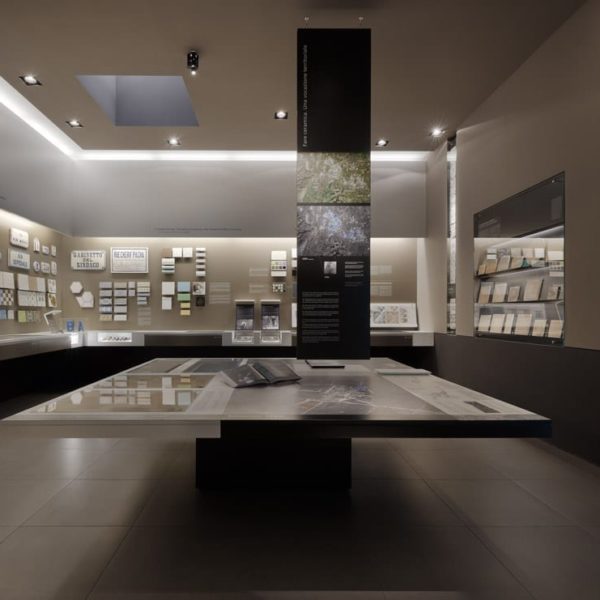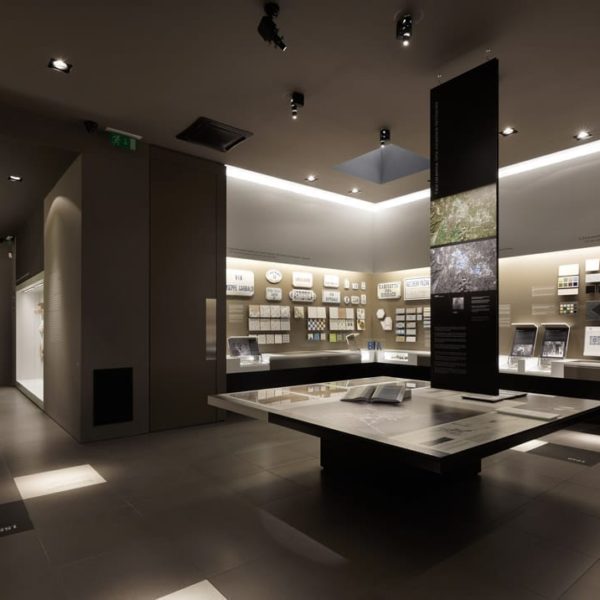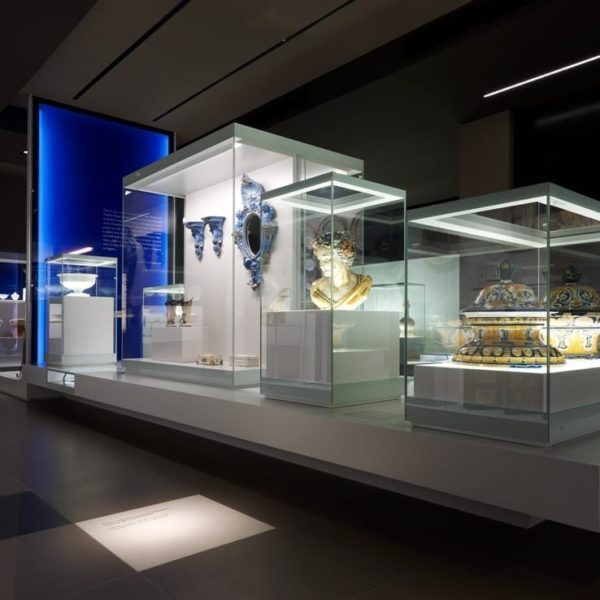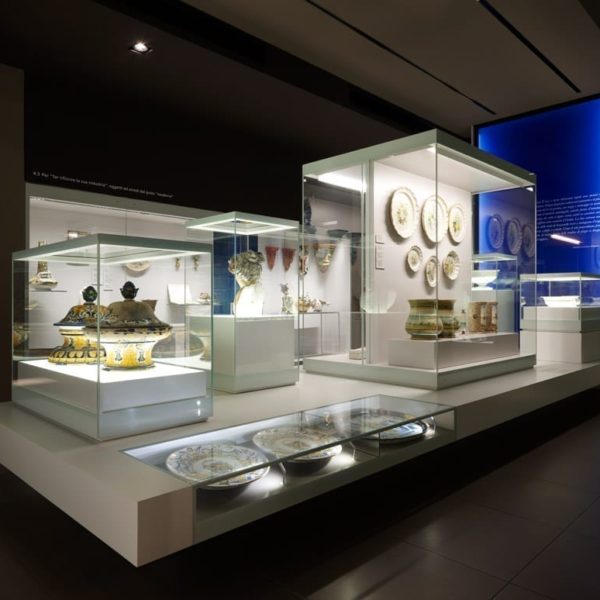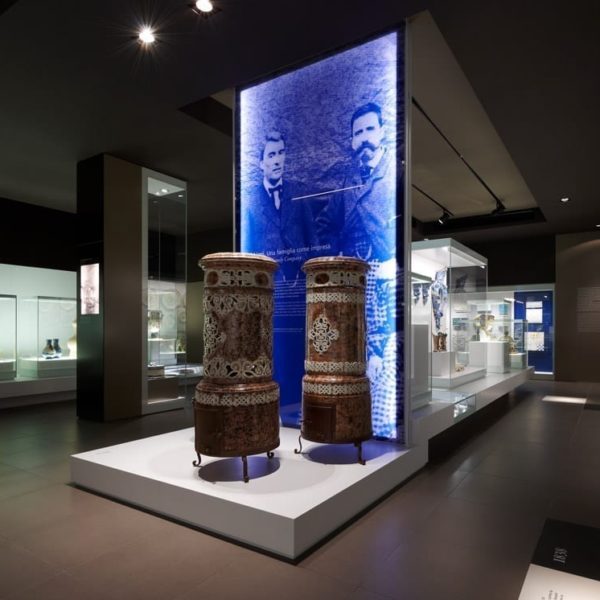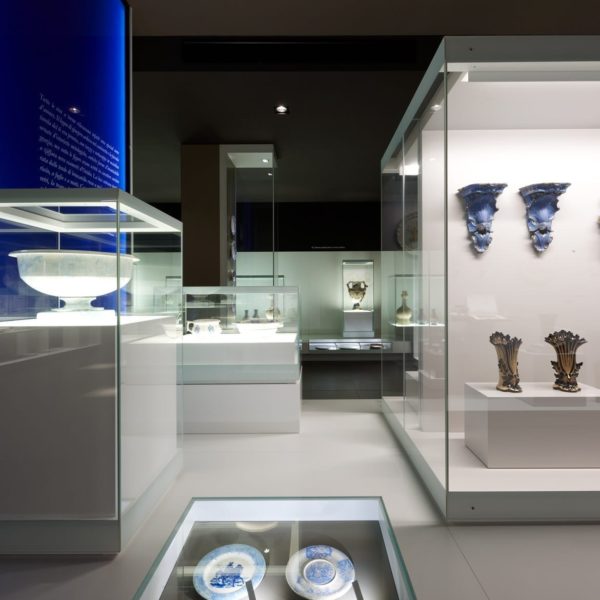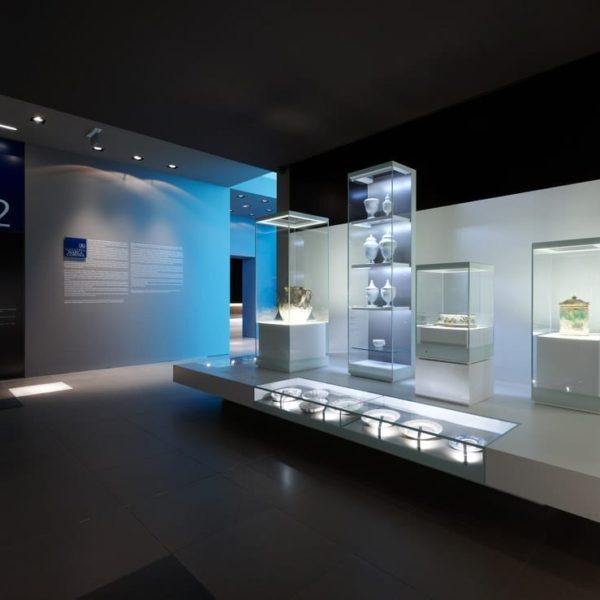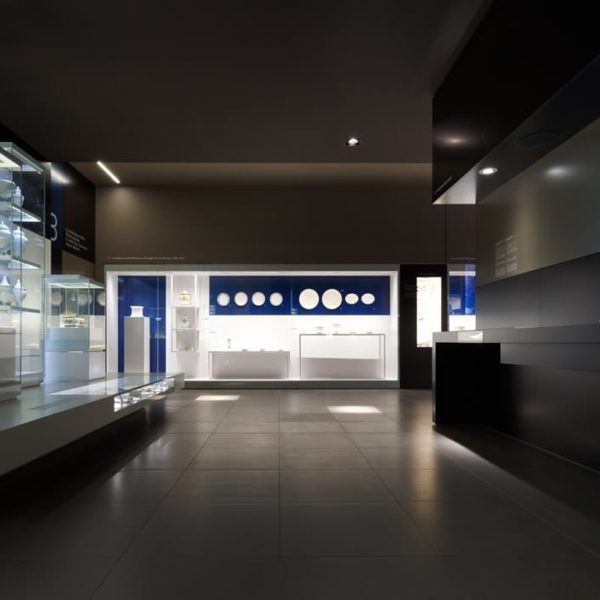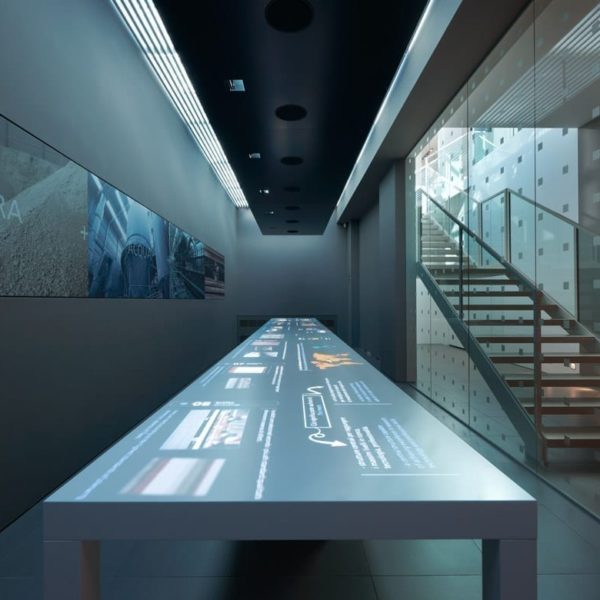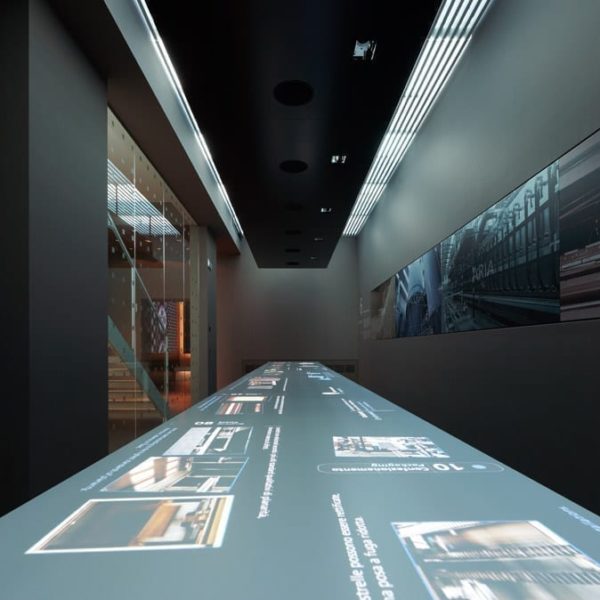History and Values


The Marca Corona Museum | by Elena Pasoli
Article published in: "A glance back at the history of ceramics"
The Galleria Marca Corona is an innovative museum that traces the history of the oldest company in the Sassuolo ceramic district, offering a clear and direct account of the origins, history and evolution of ceramic products through to the advanced technology of today’s tiles. It is an initiative that revisits and celebrates a company’s heritage, narrating pages of history via a multimedia language that contextualises objects and makes them the protagonists of an intense reinterpretation of the past.
The Museum explores the company’s “genetic heritage”, from its initial production of tableware and home décor items through to street name and numbering plates and decorated floor and wall tiles, the forerunners of today’s high-quality industrial output.
Devoted to the memory of the late Professor Cirillo Mussini, former chairman of Concorde Group, the museum derives from the nineteenth century “Museo della Fabbrica Rubbiani”, an exhibition of fine Sassuolo ceramics complemented by pieces from Faenza and other centres of ceramic production in Italy (Casteldurante, Castelli, Pesaro, Savona, Carpi and Modena). As noted by Federico Argnani, the first scholar to study the collection, its aim was to provide a historical testimony of the Sassuolo ceramic factory’s legacy so that customers could understand how past and present come together in modern-day production through solid business and artistic continuity, “an enduring tribute to the importance of the Sassuolo factory”. It was a kind of pioneering marketing operation that is carried on today with the additional element of strong local marketing, given that the Galleria Marca Corona captures and preserves the entrepreneurial spirit of the local area, inheriting and upholding its unique history.
The museum guides visitors along a chronological itinerary starting out from archaeological finds and documents the technological progress behind the history of ceramic manufacturing, which was revolutionised in the eighteenth century with the progression from painted terracotta to authentic majolica. During that period the bourgeoisie were becoming more discerning and were demanding ever higher quality products, requests that were met by a group of farsighted individuals who trained local workers and invited craftsmen from other areas – including Pesaro, Lodi, Livorno and even France – to contribute their expertise. The aim was to minimise imports so as to avoid having to export valuable currency.
The nineteenth century also brought major developments, including lower cost manufacturing technologies and higher quality products, resulting in earthenware of lighter weight and aesthetic qualities similar to porcelain.
Following the unification of Italy, the factory was purchased by the cultured and enterprising Rubbiani family. “The Rubbiani brothers immediately understood the potential offered by the opening up of markets following unification,” explained Vincenzo Vandelli from Studio Progettisti Associati. “They were marketing men who took part in national and universal expos, who understood the importance of advertising. They produced and sent out catalogues, they kept a close watch on their competitors and got the better of them (Sassuolo surpassed Florence for example in the field of road signs), they took risks and introduced new techniques, incorporating the characteristics of tiles from the north. It was Carlo Rubbiani who introduced tile production, which ended up by completely replacing the factory’s artistic output.” The final section of the museum focuses on today’s tiles, which, continues Vandelli, “are no longer made just from water, earth and fire, but are extremely hi-tech products with performance characteristics that would have been unimaginable just a few years ago as well as a strong focus on recycling, energy saving and the environment”.
The many visitors who have come since 2010 have already discovered the fascinating story the museum has to tell. Schools are now one of the main target groups as the exhibition can be explored from many different angles (history, science, art history, technology, etc.) and offers an unforgettable educational experience.





